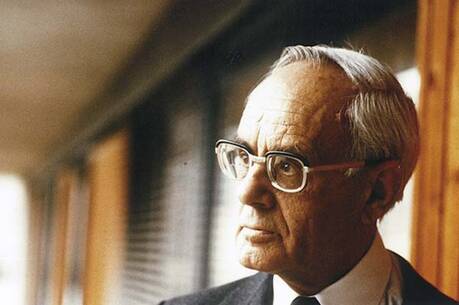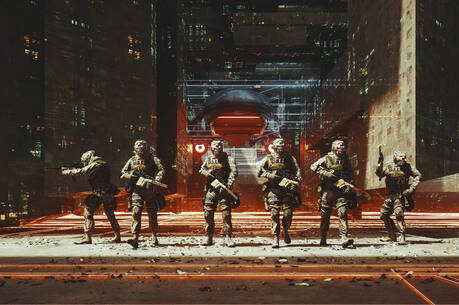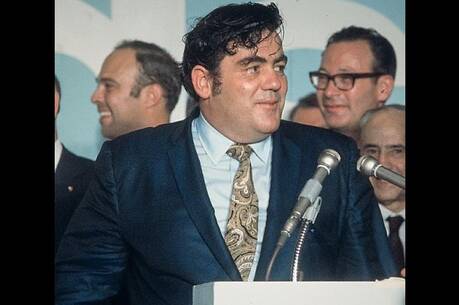Vision, Skills, Action
Yves Congar observed in Tradition and Traditions that the Christian tradition is a process as well as a content. It involves agents who hand something on to recipients, who in turn become agents of what they have received. Although Congar shed light on this complicated phenomenon, he left much unsaid. For this reason, Terrence W. Tilley, a professor of theology at the University of Dayton, has further clarified the dynamics of tradition by means of an interdisciplinary approach that includes linguistic analysis, social theory and theology. In this effort, he draws especially on the writings of George Lindbeck, Alasdair MacIntyre, James W. McClendon Jr. and Robert Schreiter.
Tilley argues that a tradition is best likened to an enduring practice or set of practices. As such, it is a communal activity that consists of a vision of life, a set of skills, patterns of action and a body of rules, a grammar. Living in a tradition is similar therefore to speaking a language. Children learn to speak as they imitate their parents and older siblings, so that by the time they enter school they usually talk with relative ease. At school, they learn the grammar that has shaped their discourse from the start. With this knowledge of the rules of speech, they are able to become deliberately creative in their use of words, for example, in their poems and short stories. In sum, they initially adopt the language that they received and then, knowing its grammar, modify it in light of their inner lights and their world.
Similarly, when someone enters the church, the person is given a vision of life and skills for prayer, worship, ethics and social interaction. Implicit in these practices is a body of theological principles that the person may come to know. In any case, the individual may eventually modify some of what she was taught. For example, faced with a parent’s illness, she may develop a special devotion to the Blessed Mother. What has occurred here? Someone has received the Christian tradition and then adapted it to her situation.
Tilley explains his practical theory of tradition by analyzing cases within Catholicism. When the Second Vatican Council reformed the liturgy so that the priest now faces the congregation instead of the wall, it did so because the church had retrieved the ancient teaching that the Mass is a meal as well as a sacrifice. The recovery of the past’s wisdom as well as an awareness of the present day’s needs required changes in the celebration of the Eucharist. Vatican II also revised Pope Pius IX’s teaching on religious freedom. If someone simply compares Pius’s Syllabus of Errors (1864) and the council’s Declaration on Religious Freedom (1965), he may conclude that the church has reversed itself on this matter, thereby breaking with its tradition. However, there may be continuity between the two teachings in that Pius IX and Vatican II were both intent upon upholding the sacred dignity of the human conscience, but each did so in dissimilar contexts. Pius IX reacted to anti-ecclesiastical governments whose policies and actions opposed Catholicism in 19th-century Europe. By contrast, Vatican II spoke to peoples around the world living in religiously pluralistic societies in the mid-20th century. Yet the same principle concerning conscience influenced these two divergent teachings. As Tilley writes, If conditions and contexts change and practices are not adapted and changes in them invented’, the tradition withers away.
In order to illustrate further how a practical theory of tradition illumines Catholicism, Tilley devotes a chapter to an analysis of the Catholic intellectual tradition. He describes a grammar that forms the world view conveyed in the writings of Teresa of Avila, J. F. Powers, Willa Cather, G. K. Chesterton and John Ford, and perhaps also expressed in the works of Graham Greene, Ignazio Silone, James Joyce, Mary Daly and Seamus Heaney. Tilley pinpoints five values that distinguish this intellectual heritage: an imagination that perceives unity or similarity where there may appear to be only separation; the hope that [t]here is nothing that cannot be or could not have been redeemed; the conviction that the body of Christ is not a sect but an inclusive community; a vision of the church’s role in the public arena; and finally a belief in God’s graciousness at the heart of creation. While other principles may influence the Catholic mind, these five stand out, though not all of them may be evident in a specific creative work.
Inventing Catholic Tradition is a carefully reasoned presentation of a fresh perspective on the process by which the church’s wisdom is passed on from one generation to the next and from one culture to another. While focusing primarily on the dynamics of tradition, it also addresses the issue of faithfulness to the content of Christian belief. Although its ideas are at times complex, its language is clear and direct. The use of examples from the church’s history and contemporary life demonstrates this way of thinking. Moreover, it keeps the discussion anchored in today’s ecclesial issues. This book is surely one that can guide its readers, especially pastoral leaders and scholars, as they receive and hand on the Catholic faith.
This article also appeared in print, under the headline “Vision, Skills, Action,” in the February 5, 2001, issue.








